Honey is a beloved sweetener that has been enjoyed by humans for centuries. However, not all honey is created equal. Some types of honey are so rare and expensive that they can cost hundreds or even thousands of dollars per pound. These are the most expensive honey in the world, and they are coveted by gourmet chefs, foodies, and collectors alike. From honey produced by bees that pollinate specific types of flowers to honey that has been aged for decades, these luxurious and rare honey offer a taste experience like no other. So, what are the most expensive honey on the market, and what makes them so special? Let’s take a closer look.
5 Most Expensive Honey In The World
Today, I will introduce you to the five most expensive honey in the world.
| Honey Name | Honey Price |
| Greek Honey from Ikaria | $6.88 |
| Miel Lo Mejor del Bierz | $150 |
| Royal Yemen Sidr Honey | $1,000 |
| Rare Harvest New Zealand Manuka Honey | $1,780 |
| Elvish Honey | $6,800 |
Greek Honey from Ikaria
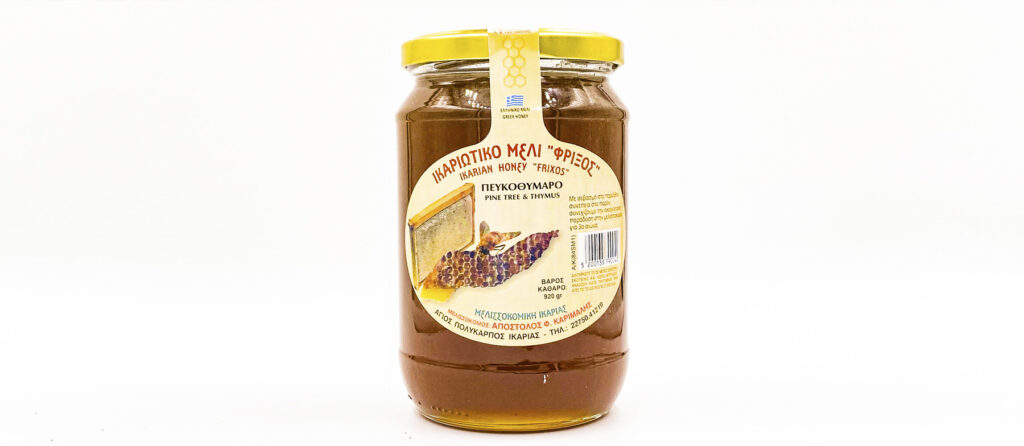
Greek Honey from Ikaria is the 5th most expensive honey in the world. Ikaria is an island located in the Aegean Sea, off the coast of Turkey. It is known for its unique and aromatic honey, which is produced from the nectar of various wildflowers and plants that grow on the island.
The bees that produce this honey are kept in a natural and healthy environment, free from pesticides and other harmful chemicals. This results in pure, unprocessed honey that is rich in nutrients and flavor.
Ikarian honey is known for its amber color and thick, syrupy consistency. It has a distinct, sweet, and floral taste with hints of herbs and spices. It is often used as a natural sweetener in cooking and baking and is also a popular ingredient in traditional Greek remedies and remedies for sore throats and coughs.
In addition to its delicious taste, Ikarian honey is also known for its numerous health benefits. It is high in antioxidants and has been shown to have anti-inflammatory properties. It is also believed to have antibacterial and antiviral properties, making it a great natural remedy for boosting the immune system.
If you want to try authentic Greek honey from Ikaria, be sure to look for products that are labeled as “raw” or “unfiltered,” as these will contain all of the beneficial nutrients and enzymes that are lost during the processing of regular honey.
Miel Lo Mejor del Bierz
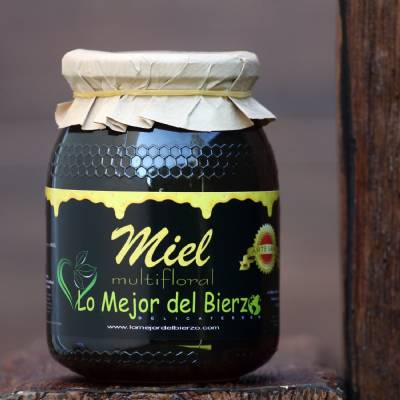
Miel Lo Mejor del Bierz is the 4th most expensive honey in the world. Miel Lo Mejor del Bierz honey is a high-quality honey produced by bees that gathers nectar from the flowers of the Bierzo region in Spain. It is known for its unique flavor and aroma, which is a result of the diverse flora found in this region. Miel Lo Mejor del Bierz honey is also considered a premium honey due to its high levels of antioxidants and other health benefits. It is often used in cooking and baking, as well as being enjoyed on its own as a sweet and nutritious treat.
Royal Yemen Sidr Honey
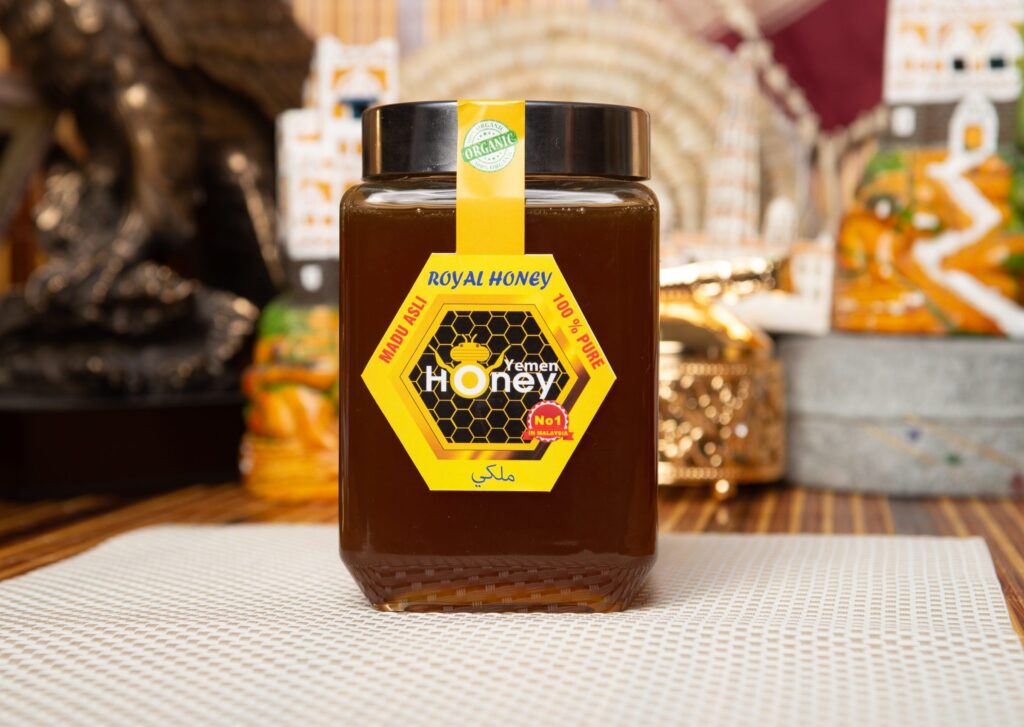
Royal Yemen Sidr Honey is the 3rd most expensive honey in the world. Royal Yemen Sidr honey is a type of honey produced in Yemen from the flowers of the Sidr tree (also known as the Jujube tree). This honey is considered to be one of the highest quality honey in the world due to the unique properties of the Sidr tree and the rareness of the honey. It is known for its dark amber color, thick consistency, and rich flavor. It is also highly prized for its medicinal properties and is believed to have many health benefits, including aiding digestion and boosting the immune system.
Rare Harvest New Zealand Manuka Honey
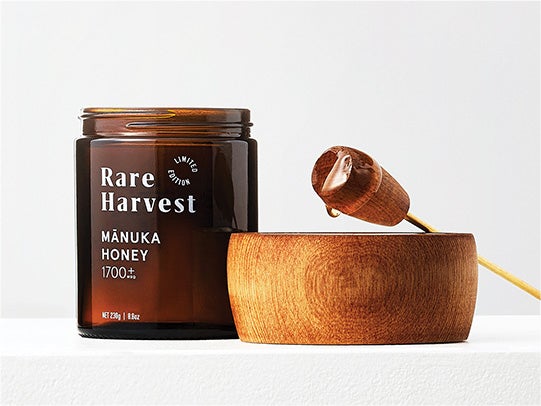
Rare Harvest New Zealand Manuka Honey is the 2nd most expensive honey in the world. Rare Harvest New Zealand Manuka Honey is a highly sought-after honey that is made from the nectar of the manuka tree, which is native to New Zealand. This honey is known for its unique flavor and medicinal properties and is often used to treat a variety of ailments including sore throats, wounds, and digestive issues. It is also believed to have anti-inflammatory and antibacterial properties, making it a popular choice for those looking for natural remedies. Rare Harvest New Zealand Manuka Honey is produced in small batches to ensure its quality and purity and is considered a premium honey due to its high levels of antioxidants and other beneficial compounds.
Elvish Honey
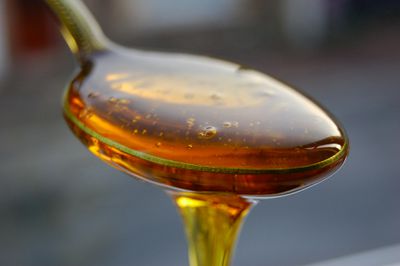
Elvish Honey is the most expensive honey in the world. Elvish honey is a type of honey that is believed to have magical properties and is highly prized among elven people. It is made by bees that live in the enchanted forests of the elven realm and is said to have a sweet, delicate flavor that is unlike any other honey.
Elvish honey is also a popular ingredient in many elven dishes, including cakes, pastries, and sweet sauces. It is also used to sweeten eleven drinks and is often served as a dessert or a topping for bread or fruit.
Despite its many uses, elvish honey is quite rare and is only available in certain parts of the elven realm. It is highly sought after by those who value its unique properties and flavor and is often sold at a premium price.
Frequently Asked Questions
How do bees make honey?
Bees make honey by collecting nectar from flowers and carrying it back to their hive. Inside the hive, the bees deposit the nectar into honeycombs and fan it with their wings to help it evaporate and thicken. As the water in the nectar evaporates, the sugar concentration increases and the nectar becomes honey. The bees then seal the honeycomb with a thin layer of wax to protect it.
How to make honey mustard?
Ingredients:
- 1/4 cup honey
- 1/4 cup Dijon mustard
- 2 tablespoons mayonnaise
Instructions:
- In a small bowl, whisk together the honey, dijon mustard, and mayonnaise until well combined.
- Taste and adjust the ingredients as needed, adding more honey for a sweeter taste or more mustard for a spicier flavor.
- Serve immediately or store in the refrigerator until ready to use. Enjoy as a dressing or dip for your favorite dishes!
Why do bees make honey?
Bees make honey as a way to store food for the winter months when there is a lack of flowers and nectar available. Honey is a concentrated and stable source of energy for the bees, and it is also used to feed the young bees in the hive. Honey production is essential for the survival and growth of the hive.
What is royal honey?
Royal honey is a type of honey that is produced by bees that are fed a special blend of royal jelly, a substance produced by the glands of young bees.
Why does honey crystallize?
Honey crystallizes due to the natural presence of glucose in the honey. Glucose is a type of sugar that naturally crystallizes over time. The process of crystallization is accelerated by factors such as temperature and the presence of pollen grains in the honey. As the honey crystallizes, the glucose crystals form and the honey becomes thicker and more solid. This process is completely natural and does not affect the quality or taste of the honey.
How long does honey last?
Honey has an extremely long shelf life and can last for years or even decades. It does not spoil or go wrong in the traditional sense, as the high sugar content and low moisture content prevent the growth of bacteria and other microbes. However, over time, honey may crystallize or darken in color, but can be returned to a liquid state by gently heating it.
How to decrystallize honey?
To recrystallize honey, follow these steps:
- Remove the honey from its container and place it in a saucepan or pot.
- Heat the honey over low heat, stirring constantly to help it dissolve more quickly.
- As the honey begins to heat up and become more liquid, it will start to break down the crystals.
- Once the honey has become fully liquid, remove it from the heat and let it cool.
- Pour the honey back into its original container or a new one, and store it in a cool, dry place.
Note: If the honey has become too thick or difficult to stir, you may need to add a small amount of water to help dissolve the crystals. Be careful not to add too much water, as this can dilute the flavor and consistency of the honey.
What is raw honey?
Raw honey is honey that has not been pasteurized or filtered. It is extracted directly from the honeycomb and bottled without processing or refining. Raw honey is believed to contain more nutrients and beneficial enzymes than processed honey because the heating and filtering processes can destroy some of these beneficial compounds. It is also often considered to have a more robust and complex flavor than processed honey.
How to make frozen honey?
To make frozen honey, follow these steps:
- Pour honey into an ice cube tray or small silicone mold.
- Place the tray or mold in the freezer.
- Allow the honey to freeze for several hours or overnight.
- Once frozen, remove the honey cubes or shapes from the tray or mold and store them in an airtight container in the freezer.
Note: Frozen honey may be more difficult to scoop or spread due to its hardened consistency. If you prefer a softer texture, you can allow the honey to thaw slightly before using it.
How to use honey?
- Use honey as a natural sweetener in drinks and desserts. Add a spoonful of honey to your tea, coffee, smoothies, or yogurt. You can also use it to sweeten baked goods like cookies, cakes, and bread.
- Use honey as a natural condiment. Mix honey with Dijon mustard and a splash of lemon juice to create a homemade honey mustard dressing. You can also use it as a glaze for meats like ham or chicken.
- Use honey as a natural skin moisturizer. Apply a thin layer of honey to your face as a natural mask to nourish and hydrate your skin.
- Use honey as a natural cough suppressant. Mix a spoonful of honey with hot water or tea to soothe a sore throat and help reduce coughing.
- Use honey as a natural energy booster. Mix honey with warm water and a pinch of salt to create a quick and natural energy drink.
- Use honey as a natural remedy for cuts and burns. Apply a thin layer of honey to the affected area to help speed up the healing process and prevent infection.
- Use honey as a natural hair conditioner. Mix a spoonful of honey with a cup of warm water and use it as a natural hair rinse to add shine and moisture to your hair.
How to make hot honey?
- Combine 1 cup of honey and 1/4 cup of hot sauce (such as Sriracha or Frank’s Red Hot) in a small saucepan.
- Heat the mixture over medium heat, stirring constantly, until it comes to a boil.
- Reduce the heat to low and simmer for 5-10 minutes, stirring occasionally, until the hot sauce is fully incorporated and the honey is hot.
- Remove from heat and let cool slightly before serving.
- The hot honey can be stored in an airtight container in the fridge for up to 2 months. To use, simply heat it in the microwave or a small saucepan over medium heat until it is hot. Enjoy on wings, pizza, sandwiches, or drizzled over grilled meat or vegetables.
What do bees do with honey?
Bees use honey as their primary source of food and energy. They store the honey in the honeycomb cells of the hive and consume it as needed. Bees also use honey as a food source for their young, feeding it to the larvae in the form of a substance called “bee bread.” In addition, bees may use excess honey as a way to seal cracks or openings in the hive to keep it protected and insulated.
Why is manuka honey so expensive?
Manuka honey is expensive because it is produced in limited quantities and is made from the nectar of the manuka plant, which is native to New Zealand. The manuka plant only grows in certain parts of the country, and the bees that produce the honey have to travel long distances to collect the nectar. This means that the production of manuka honey is time-consuming and labor-intensive, which increases the cost. Additionally, manuka honey has unique medicinal properties that make it more valuable than other types of honey, which also contributes to its high price.
Why is Manuka honey so expensive?
Manuka honey is known for its unique properties, distinct flavor, and potential health benefits, and several factors contribute to its relatively high cost compared to other types of honey. Here are some reasons why Manuka honey is often more expensive:
- Limited Geographic Origin: Authentic Manuka honey comes from New Zealand and, to a lesser extent, Australia. The production is restricted to specific regions where the Manuka tree (Leptospermum scoparium) grows. The limited geographic origin adds to the rarity and exclusivity of Manuka honey.
- Manuka Flowering Season: Bees produce Manuka honey by foraging on the nectar of the Manuka tree’s flowers. The Manuka tree has a relatively short flowering season, usually in late spring to early summer. The restricted time frame for nectar collection makes the production process more challenging and contributes to the limited supply.
- Labor-Intensive Harvesting: Harvesting Manuka honey can be labor-intensive. Beekeepers must carefully manage their hives, transport them to the remote locations where Manuka trees grow, and extract the honey during a specific window when the nectar is at its peak.
- Manuka’s Unique Chemical Composition: Manuka honey is renowned for its high levels of methylglyoxal (MGO), which is believed to contribute to its antibacterial properties. The unique chemical composition of Manuka honey, including elevated levels of MGO, sets it apart from other honey varieties and may contribute to its higher price.
- Quality Standards and Testing: Authentic Manuka honey is subject to stringent quality standards, and reputable producers often conduct testing to verify the presence of specific markers, such as MGO. This testing ensures the authenticity and quality of the honey, adding to production costs.
- Packaging and Certification: Packaging and labeling requirements for Manuka honey are specific, and genuine products often carry certifications to authenticate their origin and quality. Meeting these standards and obtaining certifications can contribute to the overall cost of production.
- Market Demand and Marketing: The demand for Manuka honey has surged due to its perceived health benefits and unique qualities. The marketing of Manuka honey as a premium product with potential therapeutic properties has further increased its popularity and, consequently, its price.
- Sustainable and Ethical Practices: Some Manuka honey producers emphasize sustainable and ethical beekeeping practices, such as organic farming and minimal intervention. These practices can increase production costs but appeal to consumers seeking environmentally conscious and responsibly sourced products.
In summary, the combination of limited geographic origin, seasonal and labor-intensive production, unique chemical composition, and rigorous quality standards contribute to the higher cost of Manuka honey. Consumers are often willing to pay a premium for the perceived quality, authenticity, and potential health benefits associated with this distinctive honey.
What is the most rare honey?
Several types of honey are considered rare due to factors such as the specific plants they come from, limited geographic distribution, and unique production challenges. One example of rare honey is “Sidr honey” or “Sidr Do’ani honey.”
Sidr honey is produced from the nectar of the Sidr tree (Ziziphus spina-christi), which is native to certain regions in the Middle East, including Yemen and parts of Pakistan. Sidr honey is highly regarded for its distinctive taste, fragrance, and potential medicinal properties. The Sidr tree has historical and cultural significance, and the honey produced from its nectar is known for its rarity and exclusivity.
The production of Sidr honey faces challenges such as the limited flowering season of the Sidr tree, making it a seasonal and labor-intensive harvest. Additionally, the Sidr tree’s specific geographic distribution contributes to the scarcity of this honey.
It’s worth noting that the rarity of honey can vary based on regional factors, and there are other types of honey, such as certain varieties of monofloral honey, which are also considered rare due to the specific plants from which they are sourced. Examples include some types of single-origin, monofloral honey produced from rare or endemic flowers that have limited blooming periods.
The rarity and uniqueness of honey often contribute to its desirability and higher market value. As with any specialty honey, it’s essential to ensure that the honey is sourced ethically, and reputable producers often provide information about the honey’s origin, production methods, and quality standards.
Which honey is best in the world?
The perceived “best” honey can be subjective and depends on individual taste preferences, cultural factors, and intended uses. Different types of honey vary in flavor, color, and nutritional composition based on the flowers from which bees collect nectar. Here are a few types of honey that are often highly regarded:
- Manuka Honey: Hailing from New Zealand and Australia, Manuka honey is known for its unique antibacterial properties attributed to its high methylglyoxal (MGO) content. It’s often sought after for its potential health benefits and is used in various wellness applications.
- Acacia Honey: Acacia honey is known for its light color, mild taste, and slow crystallization. It is sourced from the nectar of the acacia tree and is popular for its clarity and sweetness.
- Clover Honey: Clover honey is widely produced and consumed, particularly in the United States. It has a mild, sweet flavor and is versatile for various culinary uses.
- Lavender Honey: Lavender honey is produced by bees that forage on lavender flowers. It has a distinct floral aroma and flavor and is often enjoyed for its unique profile.
- Buckwheat Honey: Buckwheat honey is dark in color and has a robust, molasses-like flavor. It is rich in antioxidants and is often chosen for its potential health benefits.
- Sidr Honey: Sourced from the nectar of the Sidr tree in the Middle East, Sidr Honey is highly regarded for its distinct taste and fragrance. It is considered rare and is associated with cultural and medicinal significance.
- Tupelo Honey: Tupelo honey is produced from the nectar of the tupelo tree in the southeastern United States. It is known for its light color, mild taste, and resistance to crystallization.
Ultimately, the “best” honey is a matter of personal preference. Some people prefer light, mild honey, while others may enjoy the bold flavors of darker varieties. Additionally, factors such as the honey’s origin, purity, and how it complements specific foods or beverages can influence an individual’s preference. It’s advisable to explore different types of honey to find the one that suits your taste and intended use.
What honey is better than manuka?
Determining which honey is “better” than Manuka honey can be subjective, as different kinds of honey have distinct flavors, characteristics, and potential health benefits. Manuka honey is well-known for its unique properties, including high levels of methylglyoxal (MGO) associated with antibacterial qualities. However, other types of honey are highly regarded for various reasons. Here are a few examples:
- Sidr Honey: Sourced from the nectar of Sidr trees in the Middle East, particularly in regions like Yemen and Pakistan, Sidr honey is known for its distinct taste and fragrance. It is often considered rare and is associated with cultural and medicinal significance.
- Tupelo Honey: Produced from the nectar of the tupelo tree in the southeastern United States, Tupelo honey is prized for its light color, mild taste, and resistance to crystallization. It is often sought after for its unique flavor profile.
- Manuka Honey (Different UMF/MGO Ratings): Manuka honey itself can vary in quality based on its Unique Manuka Factor (UMF) or MGO rating. The higher the rating, the more potent the antibacterial properties. Different individuals may have different preferences for specific UMF or MGO ratings based on their intended use and taste preferences.
- Acacia Honey: Acacia honey, sourced from the nectar of acacia flowers, is known for its light color, mild taste, and slow crystallization. It is often favored for its clarity and sweetness.
- Buckwheat Honey: Dark and robust, buckwheat honey has a strong, molasses-like flavor. It is rich in antioxidants and may offer potential health benefits.
Ultimately, the “best” honey depends on individual preferences in terms of taste and potential health benefits. Some people prefer the distinctive taste of certain monofloral honey, while others may appreciate the versatility of lighter, milder honey. It’s advisable to explore different types of honey and choose based on personal taste and intended use. Additionally, factors such as authenticity, purity, and ethical sourcing may influence one’s choice of honey.
What is the rarest color of honey?
The color of honey can vary widely, and the rarest color is not universally agreed upon. Honey comes in a spectrum of colors, ranging from light hues like white and amber to darker shades like brown and even red or green in some cases. The color of honey is influenced by the types of flowers from which bees collect nectar and the mineral content of the soil in the area.
One example of a rare honey color is “blue honey,” which is an exceptionally unusual occurrence. Blue honey has been reported in some regions, and its color is attributed to the presence of unusual pigments from sources like blue flowers or certain plants. However, blue honey is extremely rare, and its occurrence is not widespread.
Keep in mind that the rarity of honey colors is subjective and depends on regional factors, the availability of specific plants, and unique environmental conditions. Additionally, honey can naturally crystallize over time, changing its color and texture.
Does honey expire?
Honey is known for its remarkable shelf life and does not spoil or expire in the way many other foods do. Archaeologists have found pots of honey in ancient Egyptian tombs that are over 3,000 years old and still perfectly edible. The key to honey’s long shelf life lies in its composition.
Honey is a natural preservative due to its low water content and acidic pH. These factors create an inhospitable environment for bacteria and microorganisms, preventing them from growing and causing spoilage. Additionally, honey contains natural enzymes that produce small amounts of hydrogen peroxide, which also contributes to its antimicrobial properties.
While honey does not spoil, it may change over time. For example:
- Crystallization: Honey tends to crystallize over time, especially if stored at cooler temperatures. Crystallization does not mean the honey has gone bad; it simply means the sugars in the honey are forming crystals. Crystallized honey can be returned to a liquid state by gently warming it.
- Color Changes: The color of honey may change over time. For example, some types of honey may darken as they age. This is a natural process and does not indicate spoilage.
To maximize the shelf life of honey, it’s best to store it in a cool, dry place, away from direct sunlight. Avoid introducing moisture into the honey, as water content can increase the likelihood of fermentation.
In summary, honey does not expire, and it has an incredibly long shelf life. As long as it is stored properly and free from contaminants, honey remains safe to consume indefinitely.
Which honey is 100% pure?
The term “100% pure honey” generally refers to honey that has not been adulterated with additives or other substances. However, it’s important to note that the purity of honey can vary, and there have been cases of honey fraud where honey is diluted or mixed with other sweeteners.
To ensure you are purchasing genuine, unadulterated honey, consider the following tips:
- Read the Label: Check the label for information about the honey’s origin, ingredients, and any certifications. Authentic honey labels should list only one ingredient: “honey.”
- Look for Certifications: Some reputable honey producers adhere to industry standards and obtain certifications that confirm the authenticity and purity of their honey. For example, the “True Source Certified” seal indicates that the honey can be traced back to ethically and legally sourced beekeepers.
- Check for Local Sourcing: Locally sourced honey, often available at farmers’ markets or directly from beekeepers, is less likely to be adulterated. Local honey may also have distinct flavors based on the types of flowers in the area.
- Consider Raw Honey: Raw honey has not been heated or processed as extensively as commercial honey. Some people prefer raw honey for its potential preservation of beneficial enzymes and antioxidants.
- Avoid Extremely Low Prices: Be cautious of honey sold at unusually low prices, as this could be an indication of adulteration or poor quality.
- Trust Reputable Brands: Purchase honey from reputable brands or producers with a history of transparent practices and positive customer reviews.
It’s worth noting that the specific floral source can influence the flavor, color, and aroma of honey. Different types of honey, such as clover honey, wildflower honey, or manuka honey, have distinct characteristics based on the plants from which bees collect nectar.
Ultimately, the key to finding 100% pure honey is to be an informed consumer, read labels, and purchase from trustworthy sources.
Which country has the purest honey?
Determining the “purest” honey can be challenging, as the purity of honey depends on various factors, including beekeeping practices, environmental conditions, and regulations in different regions. However, some countries are known for producing high-quality honey with rigorous standards and practices. Here are a few countries that are often recognized for producing pure and high-quality honey:
- New Zealand: New Zealand is known for producing Manuka honey, which is highly regarded for its unique properties and potential health benefits. Manuka honey is sourced from the nectar of the Manuka tree and is subject to strict quality standards.
- Australia: Australia also produces high-quality honey, including varieties such as Jarrah honey and Red Gum honey. Like New Zealand, Australia has stringent regulations in place to ensure the quality and authenticity of its honey.
- Canada: Canada is known for producing high-quality honey, particularly varieties like clover honey. Canadian honey is often sought after for its purity and natural sweetness.
- Argentina: Argentina is one of the largest honey producers globally and is known for its diverse range of honey varieties. Argentine honey is often valued for its quality and flavor.
- Ethiopia: Ethiopia is known for producing organic and wild honey. Traditional beekeeping practices and the diverse flora contribute to the unique flavors of Ethiopian honey.
- Turkey: Turkey is a significant producer of honey, offering a variety of types such as pine honey and chestnut honey. Turkish honey is valued for its distinct flavors and quality.
It’s important to note that within each country, the quality of honey can vary based on factors such as regional climate, floral sources, and beekeeping practices. Additionally, reputable honey producers and brands often adhere to strict quality control measures and may obtain certifications to ensure the authenticity and purity of their honey.
When seeking high-quality honey, it’s advisable to look for reputable brands, consider honey with certifications, and be aware of the specific floral sources that contribute to the honey’s unique characteristics.













